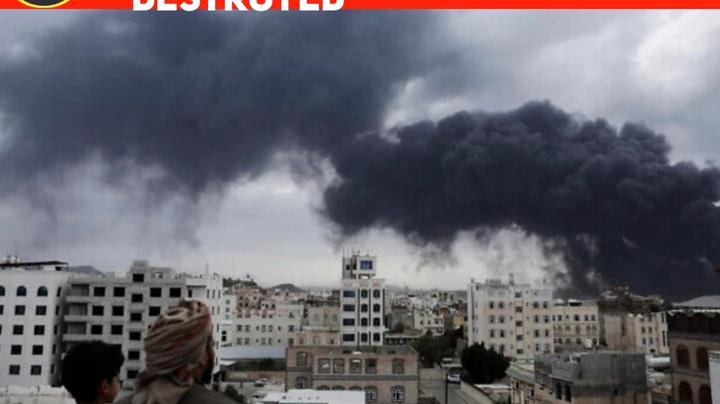According to a report shared today by The Times of Israel, Israeli airstrikes have completely destroyed Sanaa International Airport in Yemen’s rebel-held capital, leaving the facility in ruins and escalating tensions across the region. An airport official confirmed to AFP that the strikes also obliterated three of the seven aircraft belonging to Yemenia Airlines, Yemen’s national carrier.
“Three planes out of seven belonging to Yemenia Airlines were destroyed at Sanaa airport, and Sanaa International Airport was completely destroyed,” the official stated, describing the extent of the damage.
The attack comes as the war in Gaza fuels growing instability across the Middle East, with Israel intensifying its military actions against Iran-backed militias beyond Palestinian territory. The Houthis, who control much of northern Yemen including the capital Sanaa, have launched several drones and missiles towards Israel in recent months, claiming solidarity with Hamas. In response, Israel has begun targeting strategic sites in Yemen, signalling a major shift in the scope of its military operations.
Sanaa Airport, one of Yemen’s most vital civilian infrastructures, had already been severely limited due to the years-long Saudi-led blockade and the ongoing civil war. The latest destruction risks further isolating millions of people in Houthi-controlled areas and cutting off crucial humanitarian aid routes. Yemenia Airlines, which has operated under extreme conditions, now faces an uncertain future with nearly half of its fleet reportedly destroyed in a single strike.
Though Israeli officials have yet to issue a statement on the operation, the implications are significant. Targeting a major international airport represents a bold escalation, one that could provoke wider conflict across the already volatile region. It also raises serious concerns under international law, especially regarding the protection of civilian infrastructure during armed conflict.
The international community is expected to respond with heightened scrutiny, as the risk of a regional war involving multiple state and non-state actors becomes increasingly real. With Iran-backed groups in Lebanon, Iraq, Syria, and Yemen already involved, and Israel showing little sign of restraint, analysts warn that the Middle East could be heading towards a prolonged and multifront confrontation.
As events unfold, the destruction of Sanaa Airport may be remembered as a turning point—a moment where the fallout from Gaza’s war firmly reshaped the broader geopolitical order. For millions in Yemen and across the region, the cost of each new strike is growing, and the path to de-escalation appears increasingly remote.
Find Verified News At Your fingertips Click The Button Below

